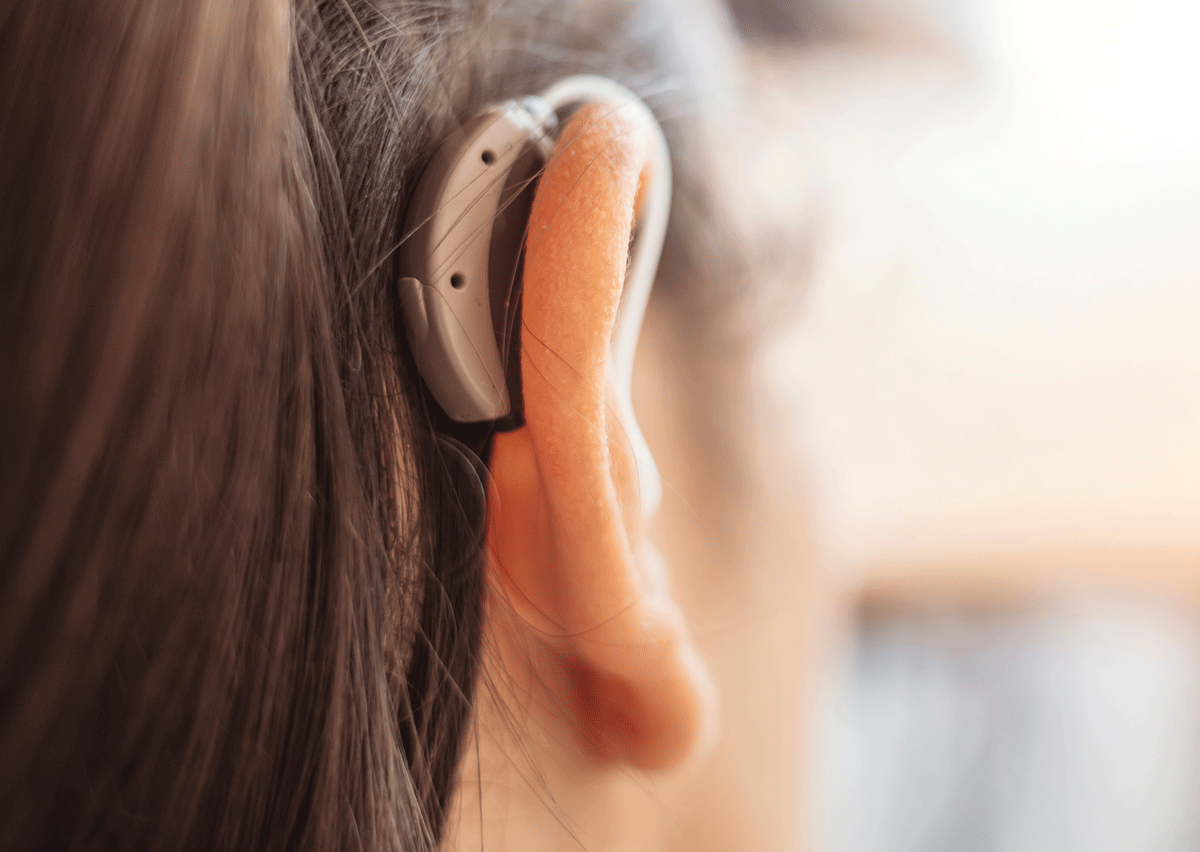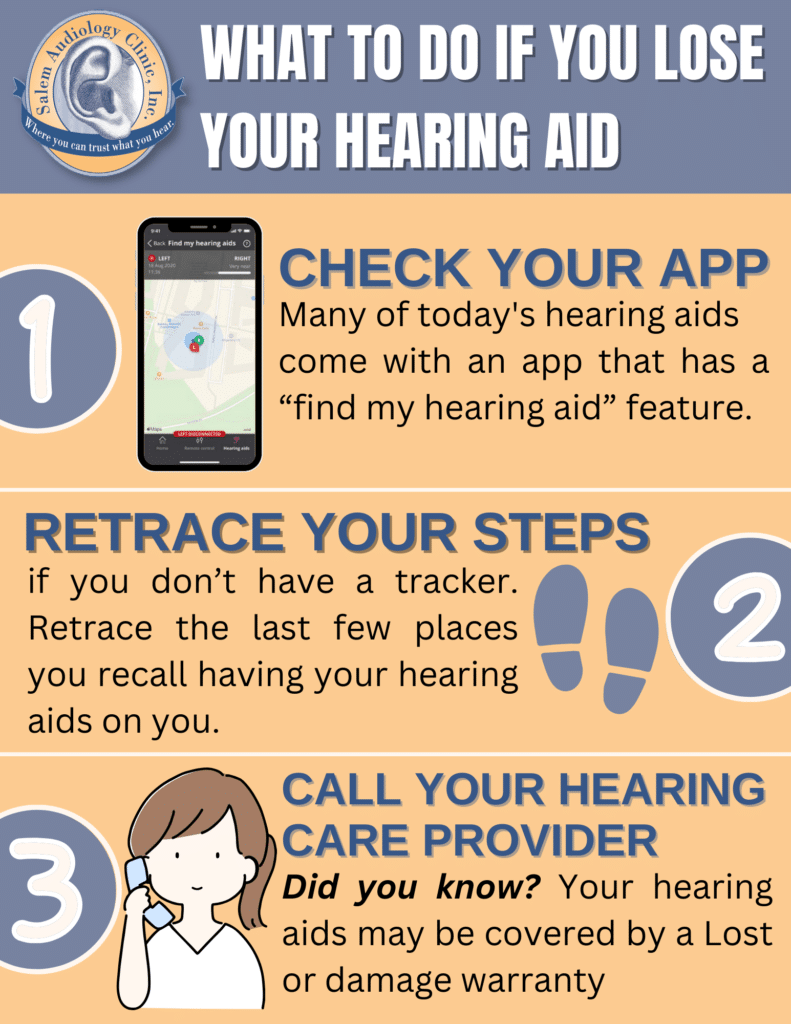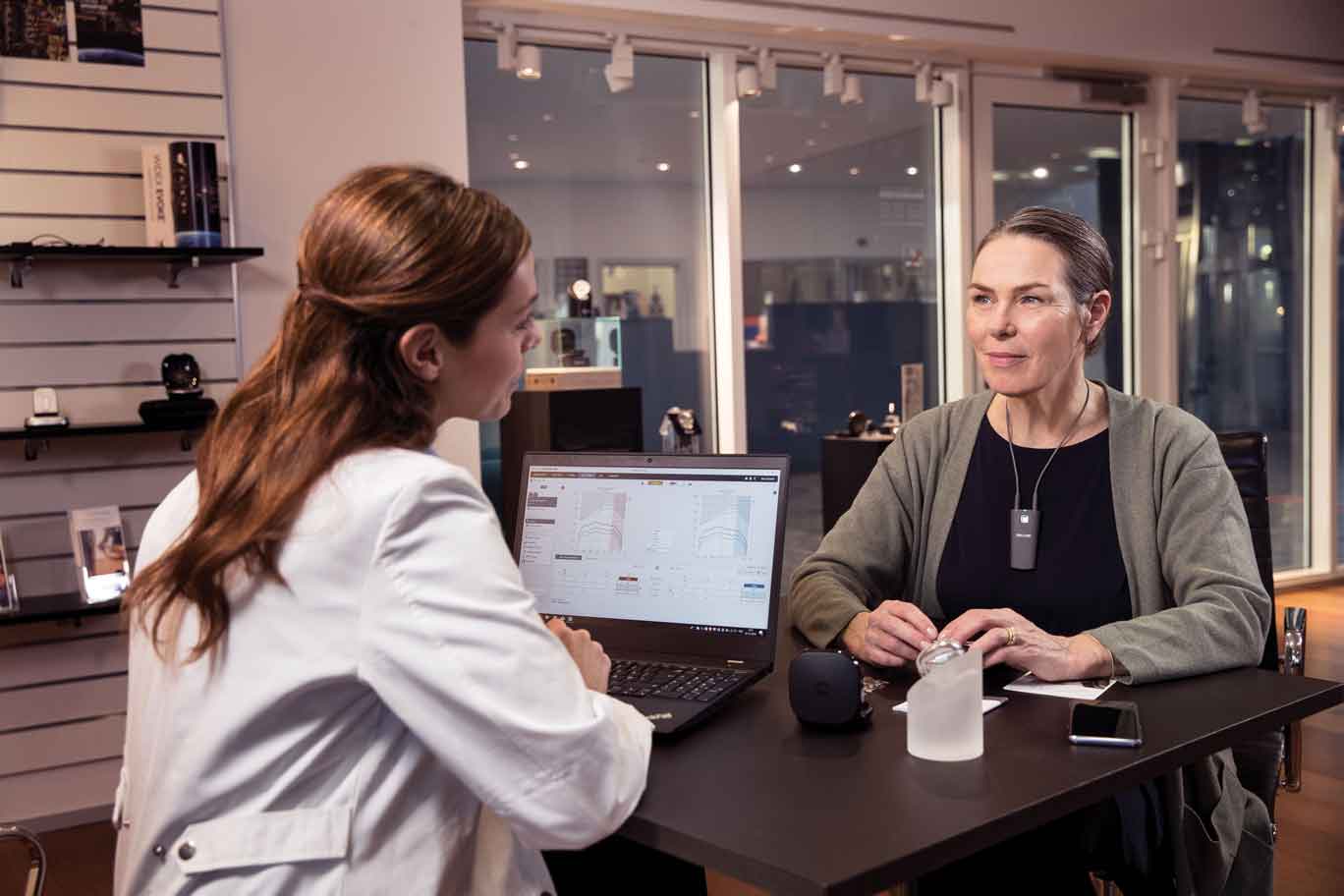
Hearing aids are small devices and can easily be misplaced and sometimes even lost! But before you allow the stress to build, you can take a few steps to find a lost hearing aid that may prove successful.
Use a hearing aid tracker App
Nowadays, most hearing aids can be used with smartphone apps that include a feature called “find my hearing aid.” This feature is helpful because it shows you the last location where your hearing aids were connected to your phone. If you can’t find your hearing aids nearby, using this feature should be your first step in locating your lost devices.
If you own a pair of Starkey hearing aids, it’s a straightforward process:
- Open up your “My Starkey” App.
- Press the lower right ribbon (three bars) to bring up the menu.
- Select the “find my hearing aids” option.
- As you move, a bar will show you if you are getting closer or closer to your hearing aids. If the devices are no longer connected or the battery has died, it will show the last connection spot with the date and time.
Some other major hearing aid manufacturers, like Oticon and ReSound, offer similar app features.
Retrace your steps
It may seem like common sense, but returning to the location where you last recall wearing your hearing aid can help locate it. Even if you’ve already done so, it’s worth trying again. Reflect on when and where you last remember having your hearing aid and what you were doing then. When did you first realize it was missing, and where were you? Those are the areas you should revisit and retrace your steps.

Report Them
If you lost your hearing aids at a public venue or business, it’s crucial to notify them immediately. Contact the venue and provide a detailed description of your hearing aids to see if they have been found. If they haven’t, leave your contact information and request a call if the hearing aids are located. Don’t hesitate to follow up multiple times. You can also enlist the help of friends and family to search for your hearing aids at home or any other location where you may have misplaced them. Someone may have found them and turned them in, or the staff may be able to locate them and contact you. Keep trying if you don’t hear back from them right away.
Contact your hearing care provider
If you lost your hearing aid, try retracing your steps and searching through your belongings, such as your home, office, car, purse, or briefcase. If this does not help, contacting your hearing healthcare provider is best. Most hearing aids are covered by warranties from the manufacturer for one-time loss and damage, usually for the first year or longer.
Your provider will be able to tell you if you are covered and may also be able to assist you in using the “find my hearing aid” feature on your app if you are unsure of how to use it.

General causes for hearing aid loss
To avoid losing or damaging your hearing aids, it’s essential to be aware of common dangers and take precautions. Here are some tips
Pets: Dogs and cats are attracted to the sounds and smells of hearing aids, so keep them in a cabinet or drawer when not in use and turn them off. This will prevent curious pets from interfering with them.
Small children: Children are good at losing things and may also swallow or chew on small objects. Keep your hearing aids out of their reach and in a safe place.
Tight spaces: If you work in mechanical or gardening jobs, be careful around machinery, tree branches, or wires. Before you put your head in a tight space, take your hearing aids out and put them in a safe place.
Misplacement: Always place your hearing aids in a safe carrying case when you remove them. Keep them in the exact location at home.
Fast-moving vehicles: When you’re in a convertible or on a roller coaster, strong winds can take your hearing aids out of your ears. Please remove them and put them in a safe carrying case before engaging in these activities.
Clothing: Be careful when removing shirts, sweaters, and other tops, as behind-the-ear hearing aids can easily fall off. Check your pockets for holes before putting your hearing aids in them.
Traveling: When you’re away from home, bring a particular container for your hearing aids and check your ears after each significant activity to ensure they’re still in place.
Protecting your investment
When it comes to protecting your hearing aid, accidents can happen to anyone, so it’s important to take precautions. Here are some things you should consider to safeguard your investment.
Firstly, check if your hearing aid has a manufacturer’s warranty and whether it covers loss and damage. Find out if there are any charges to replace a lost or damaged assistance under the contract and if it’s renewable or extendable. You can talk to your hearing provider for more information.
If your hearing aid has no manufacturer’s warranty, you can sometimes put it on your homeowner’s or renter’s insurance. Make sure to look into whether the insurance covers loss or damage and if there is a deductible. You can also consider getting specialty hearing aid insurance such as ESCO.
Lastly, it’s essential to know the replacement cost of your aid without insurance or warranty. This can help you decide whether to keep the warranty or take out insurance on your aids.
It can be concerning to misplace your hearing aid, but taking preventive measures can help prevent it. If it goes missing, it’s essential to take the proper steps to replace it so you can continue appreciating the sounds of the world around you.
Call us today at (971) 701-6322
